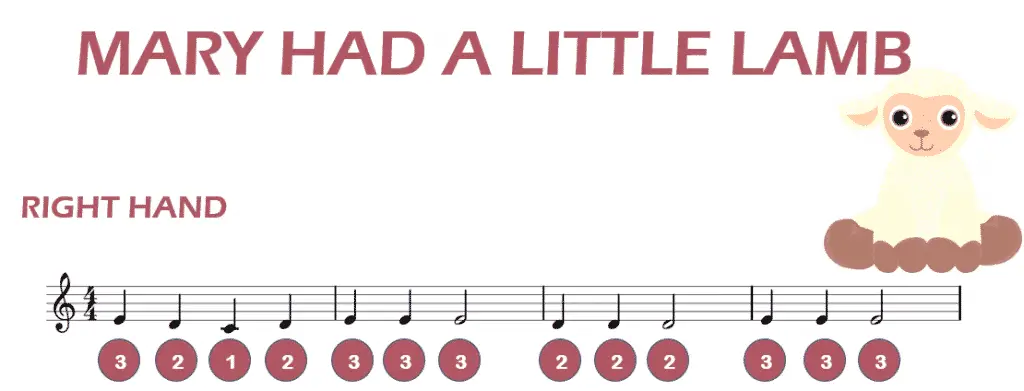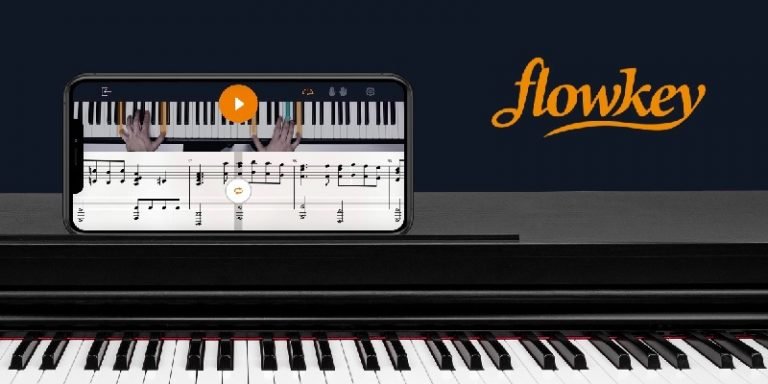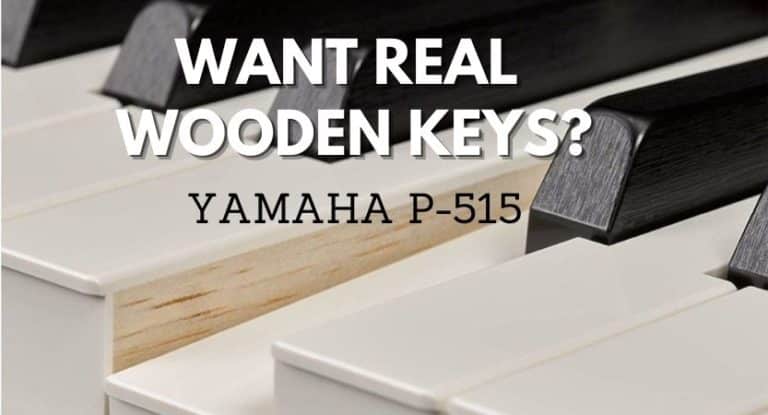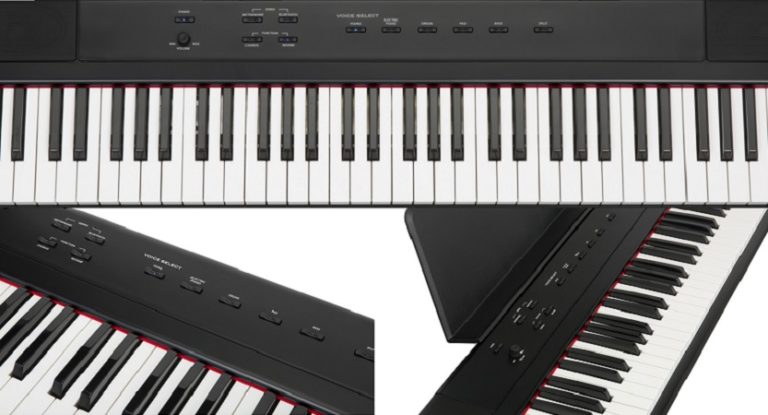How To Teach Piano To A 5 Year Old & The Best Beginner Piano Books
A friend asked me recently- Is 5 years old too young for a child to start learning piano? My friend is also a piano teacher and had just been asked to teach a child of this age.
In this post, I will outline how to teach piano to a 5 year old using the methods I have tried and I will also point you towards the best resources and beginner piano books for 5 year old.
Whether you’re a parent who wants to help your child learn piano or a piano teacher with a young student, teaching a student this young can be challenging. However, don’t give up! Music is of great benefit to your child’s development. Read more about this in this post from Kinacle on “The Developmental Benefits Of Music For Children”.
WHAT AGE SHOULD CHILDREN START PIANO LESSONS?
Every child develops at his or her own pace but many children start learning to play the piano between the ages of five and nine. It is during these years that a child will soak up new information like a sponge!
I have taught several 5-year old children – the youngest I taught was age 4. From my experience, age 5 is a good age for most children to begin learning an instrument and in this article, I will explain this and outline the reasons why.
DIFFERENTIATION
Every student is different and learns in different ways. Differentiation is one skill, that as teacher, I have learned is key to successful results.
No matter how different the learning is for each student however, there are a number of methods to use with young students that work well every time.
Learning to play the piano is beneficial for a variety of reasons for a child. Children who learn instruments at an early age tend to develop improved memory, listening, math, and fine motor skills.
However, teaching a new instrument to a child is not always easy.
IS “MY” 5 YEAR OLD CHILD READY TO LEARN PIANO?
Pay attention to these characteristics to determine if your child is ready to learn an instrument:
● Manual dexterity
● Hand size
● An interest in learning
Children under the age of five may not have the manual dexterity needed to play the piano. Learning the piano requires a child to move fingers individually to press the necessary keys.
Along with motor skills, a child’s hand size may impact his or her ability to play. Your child’s hands should be large enough to allow all fingers to touch separate keys.
If your child does not show any interest in learning to play the piano, he or she may struggle to pay attention during the lesson. Luckily, many five-year-old children are eager to learn.
However, don’t forget that learning a musical instrument can help develop these skills. Music offers numerous developmental benefits to children- linguistic, motor, cognitive, social-emotional. Read more about this here.
MAKING A PIANO LESSON PLAN FOR 5 YEAR OLD
The first piano lesson should introduce basic concepts and help your child become more familiar with the keys. Some of the main areas typically covered during the first lesson include:
● Use age appropriate vocabulary
● Right and left
● The finger-number system
● Black key groupings
● The musical alphabet
● Finger position
USE AGE APPROPRIATE VOCABULARY
Get to know your student if you don’t already. Remember you are talking to a young child so use words that they will understand and introduce more complex musical words slowly and one by one.
RIGHT AND LEFT
Does the child know right from left? If not start with this. Sit on the right side and explain to them that the hand nearest you is the right. There are many ways to teach a kid right and left but if they don’t already know, learning piano will certainly help them remember.
THE FINGER-NUMBER SYSTEM
Start by teaching the child the piano finger numbers. The numbers appear in sheet music, indicating which finger to use for each note.
The numbers range between one and five on each hand. The thumb is number one while the pinky finger is number five. (See the image.)

BLACK KEY GROUPINGS
After practicing counting to five on each hand, introduce the black key groupings. As with the math lessons that your child likely learns in school, this requires pattern recognition. Kids love patterns! Have the child point out the groupings of two and three black keys.

THE MUSICAL ALPHABET
Next, introduce the musical alphabet, which contains just seven letters (A to G).
There are piano key labels available but if you do use these, limit it to the first few lessons – the child must be able to recognize the keys without these so if you can avoid them, all the better!
FINGER POSITION
With these basic concepts in place, your child can start working on finger positioning and learning his or her first song.

When the child knows C D and E you can use this little piece. Just look at how simple Mary had a little lamb becomes when the finger positioning is correct. If you’d like to download the full version of this little tune as a PDF click here.

VARY THE STIMULUS- PLAY TIME AND GAMES
Make sure to choose a book that is appropriate for a young child. Children love colors and pictures. There are plenty of recommendations for a book in my piano book section below.
Along with the book however, make sure to vary the lesson with other visual aids and resources.
Children love play time and games. Make sure to include plenty of “play time” in the lesson. There are various ways to do this. I have some resource ideas you can get on Amazon listed below which may be of use.
However, I am not saying you have to fork out a fortune on resources- you can make your own! Or print them- colorful posters or laminated sheets are a great resource to help your lesson! Be creative and think of other things the child knows to help them remember musical facts.
You can download a PDF of this animal sounds rhythm poster here.

TEACHING RESOURCES
MY FREE PDF RESOURCES
Click here to see my free worksheets to practice reading notation and finding notes on the keyboard and here for my spelling words with music notes worksheet selection. The color codes on the second finding notes worksheet correspond to those used by Prodigies on their Chromanotes Piano Stick-Ons.
I also highly recommend Prodigies music/ piano courses for kids – they are fun, developmental, and motivating for kids learning any instrument. You can even do a 30-day trial before committing.
Here are some Amazon resources you may find useful- click the image to view more details
SELF-TEACHING PIANO BOOK
This book includes piano key stickers that the kid matches with the notes on the piece. Each note has an animal image.
I AM LEARNING PIANO MYSELF – CAN I TEACH MY CHILD?
Yes you can! Why not? Just take it one step at a time.
You will have to break down what you are learning into much easier language of course- break down the music terminology and use words they understand… and buy a book, especially for a child.
Colorful books and books with tunes they can sing along to are the best for a child this age. They need an easy book to start with and having their own, special book will motivate them to learn!
See the recommended books below.

TOP BEGINNER PIANO BOOKS FOR 5-YEAR-OLD CHILDREN
Before you start teaching your child to play the piano, consider purchasing a piano book. Piano books designed for children provide a complete outline for introducing basic concepts, including the musical alphabet and piano key groupings.
Here are a few of the top beginner piano books for 5-year-old kids.
WP230 – Piano for the Young Beginner – Primer A – Beginner Piano Lessons for Kids
The Primer Series is part of the Bastien Piano Basics books. First published several decades ago, the Bastien Piano books remain the most used piano books for beginners.
The Primer A book explains how to read sheet music and includes several lessons. Children can learn the first few songs with minimal guidance.
Piano teachers have relied on these books for many years to introduce children to the basics. Your child first learns the finger numbers followed by finger positioning and how to read staff notes.
The songs are all simple and clearly labeled with numbers and notes. When your child completes the lessons, you can move on to the next book in the series, providing a complete system for mastering the piano.
Beginner Piano Lessons for Kids
Featuring over a dozen classic songs, this book provides children with simple arrangements that they can easily master.
It is intended for children between the ages of 5 and 11 but requires children to already know the basics, such as finger positioning and notes.
The lessons are designed to quickly teach children the songs, starting with just the right hand before adding the left thumb and eventually both hands.
Children should enjoy the large, easy-to-read sheet music with the fingers and notes clearly labeled. As a bonus, the book provides access to online videos that cover the same lessons.
Alfred Basic Piano Library Course Pack Level 1A
This four-book set includes everything needed to introduce the piano or keyboard to a child.
The first book teaches basic piano topography and focuses on simple rhythms, preparing children for more advanced piano concepts.
The theory book includes games and quizzes to help reinforce the concepts introduced in the first book.
After completing the series, your child should know how to play some of the most beloved classic piano songs for beginners, including Mary Had a Little Lamb.
Teaching Little Fingers to Play: A Book for the Earliest Beginner
As one of the best-selling beginner piano books for 5-year-old children, this book offers a simple lesson structure that any child can grasp.
Most of the songs included in the book require just one hand to play while the melodies are kept simple for easier memorization.
Each page introduces a new concept and melody to learn and practice. The pictures are colorful and easy to follow, no matter the age.
It also comes with stickers for labeling the notes on the piano or keyboard.
Piano Book for Kids 5 & Up – Beginner Level
Professor Damon Ferrante has beautifully laid out this colorful book, especially written for age 5 and older.
Full of lesson basics, diagrams and first pieces.
Click image to view on amazon where you can ‘look inside’ the book.
ONLINE LEARNING APPS
Take a look at Prodigies piano course. Kids love the colorful sheet music and video lessons with excellent instructors are specifically targeted towards kids. They have music courses that teach the basics of music in a fun way that really develops a child’s interest in the subject.
Another excellent online interactive learning platform is flowkey. Their slogan is ‘learn piano with the songs you love’ and this is truly what this app is about – learning through playing songs you love. They have a free trial or if you are the proud owner of a new Yamaha – you get three months free.
CONCLUSION
In conclusion, despite short lessons, learning how to teach piano to a 5-year-old requires excellent planning. Purchase a few beginner piano books and plan the first lesson.
It is important to keep lessons short – twenty or thirty-minute sessions are enough. Little and often is the key. You will hold their concentration and they’ll learn more.
Consider using flashcards along with other methods. When introducing a song, show your child the flashcard containing the notes or chord being used. The bright, colorful cards may make the process a little more entertaining.
As a final tip, remember, the key to teaching children is to make learning fun! Children often lose interest when the activity begins to feel the same as a chore. Keep the lessons short and entertaining. With the right approach, you can give your child a lifelong appreciation of music and learning.
Let us know your experience in the comments. What methods do you find best?
NEED PERSONAL HELP?
Reach out to me on messenger for the quickest response.















